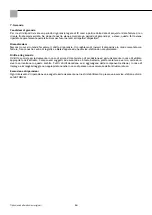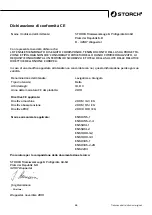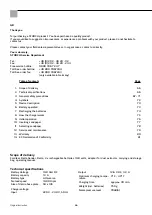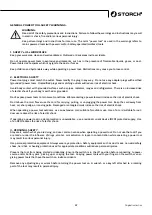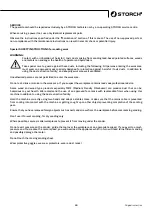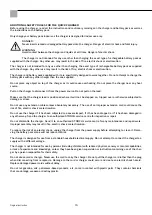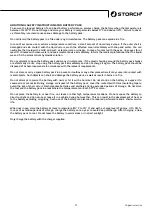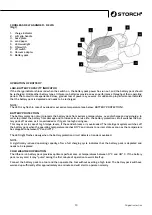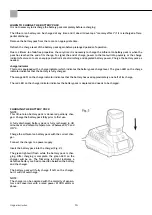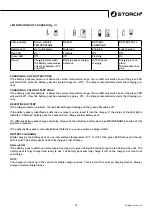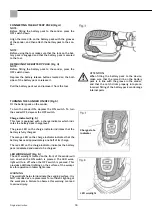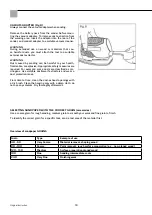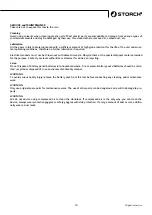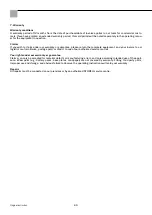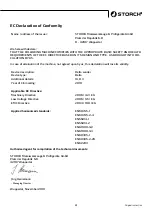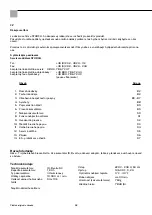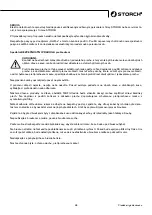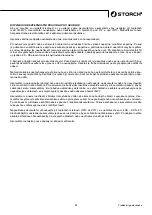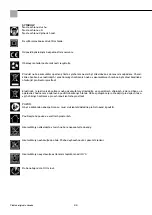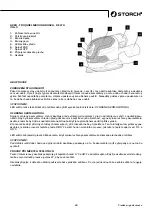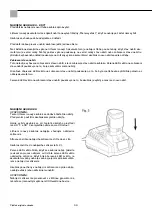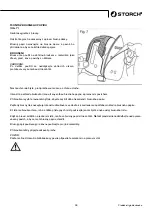
78
VACUUM ADAPTER (Fig.8)
Always connect the vacuum adapter when sanding.
Remove the battery pack from the sander before moun-
ting the vacuum adapter. To improve dust extraction from
the working area, insert the adaptor into the rear of the
sander, and connect adapter to a suitable vacuum cleaner.
WARNING:
During extended use on wood or materials that cau-
se harmful dusts, you must attach the tool to a suitable
external dust extractor.
WARNING:
Dust caused by sanding can be harmful to your health,
flammable, or explosive. Appropriate safety measures are
required. For example: some dusts are classified as car-
cinogens. Use suitable dust/swarf extractors and wear a
dust protection mask.
From time to time, clean the dust-exhaust openings with
a dry brush. Clean the housing only with a damp cloth; do
not use any solvents. Dry thoroughly afterwards.
SELECTING SANDPAPER WITH THE CORRECT GRAIN (accessories)
Use a coarse grain for rough sanding, medium grain to smooth your work and fine grain to finish.
To identify the correct grain for a specific task, sand a test area of the material first.
Grain
Type
Example of use
40 - 60
Very Coarse
Material removal, shaping wood
80 – 100
Coarse
Paint removal, rough surface preparation (e.g., non-planed wood)
120 – 150
Medium
Surface preparation planed wood
180
Fine
Sanding intermediate coats
240
Very Fine
Finishing work
Overview of sandpaper GRAINS
Original instruction

